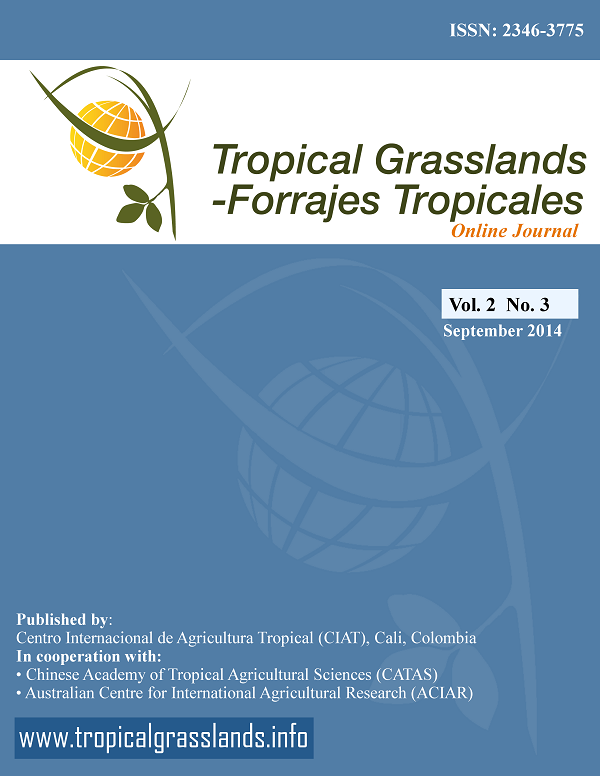Botanical and agronomic growth of two <i>Panicum maximum</i> cultivars, Mombasa and Tanzania, at varying sowing rates
DOI:
https://doi.org/10.17138/tgft(2)246-253Abstract
A field trial in northeast Thailand during 2011–2013 compared the establishment and growth of 2 Panicum maximum cultivars, Mombasa and Tanzania, sown at seeding rates of 2, 4, 6, 8, 10 and 12 kg/ha. In the first 3 months of establishment, higher sowing rates produced significantly more DM than sowing at 2 kg/ha, but thereafter there were no significant differences in total DM production between sowing rates of 2–12 kg/ha. Lower sowing rates produced fewer tillers/m2 than higher sowing rates but these fewer tillers were significantly heavier than the more numerous smaller tillers produced by higher sowing rates. Mombasa produced 23% more DM than Tanzania in successive wet seasons (7,060 vs. 5,712 kg DM/ha from 16 June to 1 November 2011; and 16,433 vs. 13,350 kg DM/ha from 25 April to 24 October 2012). Both cultivars produced similar DM yields in the dry seasons (November–April), averaging 2,000 kg DM/ha in the first dry season and 1,750 kg DM/ha in the second dry season. Mombasa produced taller tillers (104 vs. 82 cm), longer leaves (60 vs. 47 cm), wider leaves (2 vs. 1.8 cm) and heavier tillers (1 vs. 0.7 g) than Tanzania but fewer tillers/m2 (260 vs. 304). If farmers improve soil preparation and place more emphasis on sowing techniques, there is potential to dramatically reduce seed costs.
Keywords: Guinea grass, tillering, forage production, seeding rates, Thailand.
DOI: 10.17138/TGFT(2)246-253



